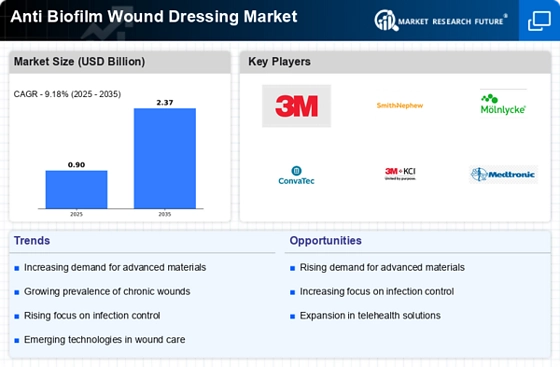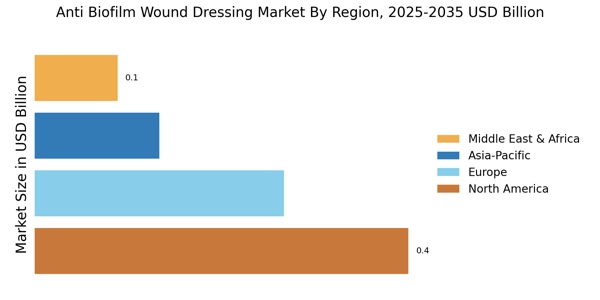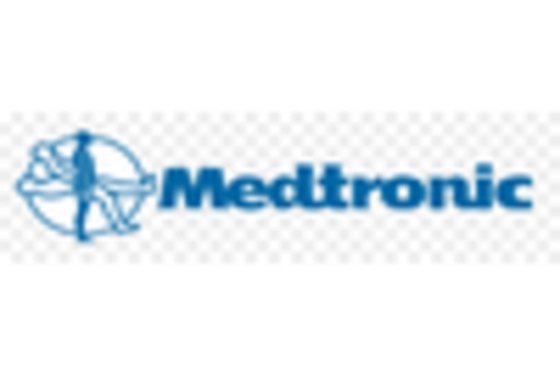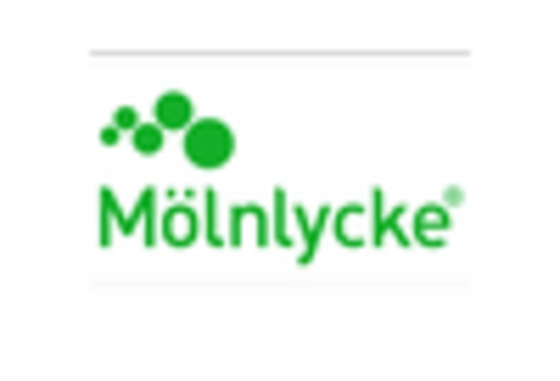Rising Incidence of Chronic Wounds
The prevalence of chronic wounds, such as diabetic ulcers and pressure sores, is on the rise, significantly impacting the Anti Biofilm Wound Dressing Market. Factors such as an aging population and the increasing incidence of diabetes contribute to this trend. According to recent estimates, chronic wounds affect around 6.5 million patients annually, leading to substantial healthcare costs and resource allocation. The need for effective wound management solutions is paramount, as traditional dressings often fail to address biofilm-related complications. Consequently, the demand for specialized anti biofilm dressings is expected to grow, as healthcare providers seek to improve patient outcomes and reduce the burden of chronic wounds.
Shift Towards Personalized Medicine
The trend towards personalized medicine is reshaping the Anti Biofilm Wound Dressing Market, as healthcare providers increasingly tailor treatments to individual patient needs. Personalized wound care solutions, which consider factors such as the patient's medical history and specific wound characteristics, are gaining traction. This shift is likely to enhance the effectiveness of wound management strategies, particularly in addressing biofilm-related challenges. As a result, manufacturers are focusing on developing customizable anti biofilm dressings that cater to diverse patient profiles. The potential for personalized solutions to improve healing outcomes may drive market growth, as healthcare systems prioritize individualized care approaches.
Increased Awareness of Infection Control
There is a growing awareness regarding infection control in wound management, which is significantly influencing the Anti Biofilm Wound Dressing Market. Healthcare professionals and patients alike are becoming more cognizant of the risks associated with biofilm formation in chronic wounds. This heightened awareness is driving the adoption of advanced wound care products that specifically target biofilm-related infections. As hospitals and clinics implement stricter infection control protocols, the demand for anti biofilm dressings is likely to increase. Market data indicates that The Anti Biofilm Wound Dressing Market is expected to grow at a CAGR of 5.5% from 2023 to 2028, further underscoring the potential for anti biofilm solutions to capture a larger share of this expanding market.
Regulatory Support for Advanced Wound Care Products
Regulatory bodies are increasingly supporting the development and approval of advanced wound care products, which is positively impacting the Anti Biofilm Wound Dressing Market. Streamlined approval processes and guidelines for innovative wound care solutions are encouraging manufacturers to invest in research and development. This regulatory support is crucial for bringing effective anti biofilm dressings to market, as it fosters innovation and ensures that new products meet safety and efficacy standards. As a result, the market is likely to witness an influx of novel anti biofilm dressings, which could enhance competition and drive down costs, ultimately benefiting patients and healthcare providers alike.
Technological Innovations in Anti Biofilm Wound Dressings
The Anti Biofilm Wound Dressing Market is experiencing a surge in technological innovations, particularly in the development of advanced materials that enhance wound healing. Innovations such as hydrocolloids, alginates, and antimicrobial agents are being integrated into dressings to combat biofilm formation effectively. These advancements not only improve the efficacy of wound care but also reduce the frequency of dressing changes, which is crucial for patient comfort and compliance. The market for advanced wound care products is projected to reach approximately USD 12 billion by 2026, indicating a robust growth trajectory. This trend suggests that as healthcare providers increasingly adopt these innovative solutions, the demand for anti biofilm dressings will likely escalate, thereby driving the market forward.


















Leave a Comment